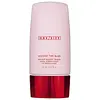What's inside
What's inside
 Key Ingredients
Key Ingredients

 Benefits
Benefits

 Concerns
Concerns

No concerns
 Ingredients Side-by-side
Ingredients Side-by-side

Water
Skin ConditioningGlycerin
HumectantSodium Acrylates Crosspolymer-2
AbsorbentButylene Glycol
HumectantDipropylene Glycol
Humectant1,2-Hexanediol
Skin ConditioningC12-14 Pareth-12
EmulsifyingAmmonium Acryloyldimethyltaurate/Vp Copolymer
Carbomer
Emulsion StabilisingCaprylyl Glycol
EmollientArginine
MaskingEthylhexylglycerin
Skin ConditioningHydroxypropyl Methylcellulose Stearoxy Ether
Silybum Marianum Extract
Skin ConditioningTocopherol
AntioxidantCI 17200
Cosmetic ColorantWater, Glycerin, Sodium Acrylates Crosspolymer-2, Butylene Glycol, Dipropylene Glycol, 1,2-Hexanediol, C12-14 Pareth-12, Ammonium Acryloyldimethyltaurate/Vp Copolymer, Carbomer, Caprylyl Glycol, Arginine, Ethylhexylglycerin, Hydroxypropyl Methylcellulose Stearoxy Ether, Silybum Marianum Extract, Tocopherol, CI 17200
Water
Skin ConditioningPolysilicone-11
Propanediol
SolventSilica
AbrasiveDimethicone
EmollientC15-19 Alkane
SolventDicaprylyl Carbonate
EmollientDimethicone/Vinyl Dimethicone Crosspolymer
Skin ConditioningGlycerin
HumectantGlyceryl Stearate Citrate
EmollientNiacinamide
SmoothingSodium Polyacrylate
AbsorbentHamamelis Virginiana Water
AstringentPhenoxyethanol
PreservativePvp
Emulsion StabilisingPullulan
Hydroxyacetophenone
AntioxidantLaureth-12
EmulsifyingEthylhexylglycerin
Skin ConditioningHdi/Trimethylol Hexyllactone Crosspolymer
Polymethylsilsesquioxane
Zingiber Officinale Root Extract
MaskingWater, Polysilicone-11, Propanediol, Silica, Dimethicone, C15-19 Alkane, Dicaprylyl Carbonate, Dimethicone/Vinyl Dimethicone Crosspolymer, Glycerin, Glyceryl Stearate Citrate, Niacinamide, Sodium Polyacrylate, Hamamelis Virginiana Water, Phenoxyethanol, Pvp, Pullulan, Hydroxyacetophenone, Laureth-12, Ethylhexylglycerin, Hdi/Trimethylol Hexyllactone Crosspolymer, Polymethylsilsesquioxane, Zingiber Officinale Root Extract
Ingredients Explained
These ingredients are found in both products.
Ingredients higher up in an ingredient list are typically present in a larger amount.
Ethylhexylglycerin (we can't pronounce this either) is commonly used as a preservative and skin softener. It is derived from glyceryl.
You might see Ethylhexylglycerin often paired with other preservatives such as phenoxyethanol. Ethylhexylglycerin has been found to increase the effectiveness of these other preservatives.
Glycerin is already naturally found in your skin. It helps moisturize and protect your skin.
A study from 2016 found glycerin to be more effective as a humectant than AHAs and hyaluronic acid.
As a humectant, it helps the skin stay hydrated by pulling moisture to your skin. The low molecular weight of glycerin allows it to pull moisture into the deeper layers of your skin.
Hydrated skin improves your skin barrier; Your skin barrier helps protect against irritants and bacteria.
Glycerin has also been found to have antimicrobial and antiviral properties. Due to these properties, glycerin is often used in wound and burn treatments.
In cosmetics, glycerin is usually derived from plants such as soybean or palm. However, it can also be sourced from animals, such as tallow or animal fat.
This ingredient is organic, colorless, odorless, and non-toxic.
Glycerin is the name for this ingredient in American English. British English uses Glycerol/Glycerine.
Learn more about GlycerinWater. It's the most common cosmetic ingredient of all. You'll usually see it at the top of ingredient lists, meaning that it makes up the largest part of the product.
So why is it so popular? Water most often acts as a solvent - this means that it helps dissolve other ingredients into the formulation.
You'll also recognize water as that liquid we all need to stay alive. If you see this, drink a glass of water. Stay hydrated!
Learn more about Water